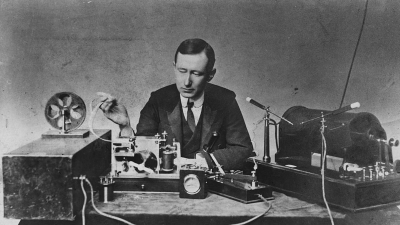
The sending of an electrical signal without connecting wires is one of the most popular communication systems in use today. The process was invented by Guglielmo Marconi who was half Italian and half Irish.
He sent his first signal in 1896 across a distance of about a mile. Just five years later, Marconi prepared for his greatest triumph. He announced that he was going to send a message across the Atlantic. If he could achieve this, the whole process of communication would be revolutionised. Crouched over what would today appear primitive equipment, Marconi sent out his signals from Poldhu in Cornwall. Everyone was amazed when he received a reply from Newfoundland.
Marconi’s announcement met with enthusiastic acclaim, but also with some skepticism. After all, the only witness was George Kemp, hardly an impartial observer, and the signals were too weak to operate an automatic recorder. Two months later, though, Marconi received transatlantic signals of sufficient strength from Poldhu to operate a Morse inker in the presence of witnesses. (Although later knowledge of radio-wave propagation indicates that the Signal Hill reception occurred under inopportune conditions, recent historians have suggested that Marconi picked up a high-frequency harmonic on his un-tuned receiver.) In January 1902, between the time of the Signal Hill reception and the later verification, the American Institute of Electrical Engineers held their annual dinner meeting in honor of Marconi. In attendance were such electrical engineering notables as Alexander Graham Bell, Charles Proteus Steinmetz, and Michael Pupin. Thomas Edison, who sent his regrets, called Marconi “the young man who had the monumental audacity to attempt, and succeed in, jumping an electrical wave clear across the Atlantic Ocean.”
Picture Credit : Google




